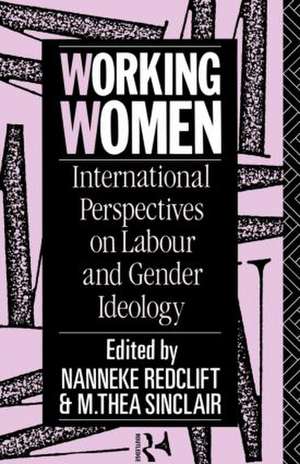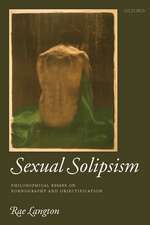Working Women: International Perspectives on Labour and Gender Ideology
Editat de Nanneke Redclift, M Thea Sinclair, M. Thea Sinclairen Limba Engleză Paperback – 4 apr 1991
| Toate formatele și edițiile | Preț | Express |
|---|---|---|
| Paperback (1) | 416.22 lei 6-8 săpt. | |
| Taylor & Francis – 4 apr 1991 | 416.22 lei 6-8 săpt. | |
| Hardback (1) | 1014.74 lei 6-8 săpt. | |
| Taylor & Francis – 2 aug 2017 | 1014.74 lei 6-8 săpt. |
Preț: 416.22 lei
Nou
Puncte Express: 624
Preț estimativ în valută:
79.65€ • 83.54$ • 66.30£
79.65€ • 83.54$ • 66.30£
Carte tipărită la comandă
Livrare economică 01-15 aprilie
Preluare comenzi: 021 569.72.76
Specificații
ISBN-13: 9780415018432
ISBN-10: 0415018439
Pagini: 256
Dimensiuni: 138 x 216 x 15 mm
Greutate: 0.45 kg
Ediția:New.
Editura: Taylor & Francis
Colecția Routledge
Locul publicării:Oxford, United Kingdom
ISBN-10: 0415018439
Pagini: 256
Dimensiuni: 138 x 216 x 15 mm
Greutate: 0.45 kg
Ediția:New.
Editura: Taylor & Francis
Colecția Routledge
Locul publicării:Oxford, United Kingdom
Cuprins
Chapter 1 Women, work and skill, M.Thea Sinclair; Chapter 2 Gender and library work, Maura Luck; Chapter 3 Images and goods, Adelina Broadbridge; Chapter 4 Shop floor control, Yildiz Ecevit; Chapter 5 Prostitution and tourism in South-East Asia, Wendy Lee; Chapter 6 Return to the veil, Homa Hoodfar; Chapter 7 Women in struggle, Avril Leonard; Chapter 8 Women shop stewards in a county branch of NALGO, Jenny Walton; Chapter 9 Money and power, Joy Lyon; Chapter 10 Greek women and tourism, Mary Castelberg-Koulma; Chapter 11 A feminist business in a capitalist world, Jane Cholmeley;
Notă biografică
Nanneke Redclift is Lecturer in Social Anthropology at University College, London,
Thea Sinclair is Lecturer in Economics at the University of Kent.
Thea Sinclair is Lecturer in Economics at the University of Kent.
Descriere
Working Women examines the position of women in the paid workforce in a variety of first and Third World countries and identifies the common cultural and economic factors which create disadvantage.












